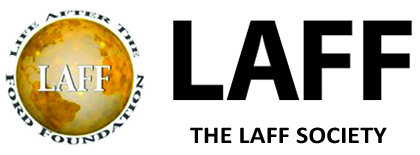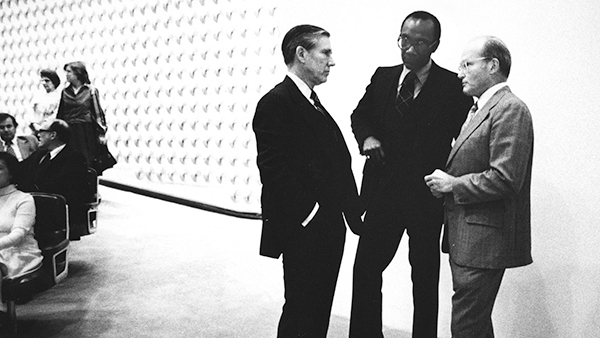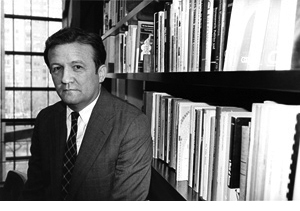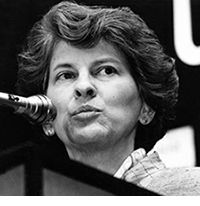NEWSLETTER
|
The “Drivers” Behind Ford’s Critical Work in the 1980s By David Bonbright
In this article, published originally by Alliance Magazine in its Summer 2003 issue and reprinted here with permission, David Bonbright describes the work of two pivotal Foundation figures who pressed for social and political justice in South Africa against considerable odds, Ford’s president, Franklin Thomas, and William D. Carmichael, a veteran Foundation official devoted to a “creative human-rights based approach”.
As part of a review of “social justice philanthropy”, it may be useful to look back at the case of the Ford Foundation in apartheid South Africa. At a time when the progressive voice in America was advocating a total boycott and the Establishment landed on “constructive engagement”, the Ford Foundation pursued an aggressive grantmaking program pointed explicitly at social and political justice questions. The road was sometimes bumpy, but in the end I think that even those critical at the time would say that Ford was uniquely effective. Why?
Before answering this question, I should disclose that from 1983 to 1987 I was one of the Ford Foundation program officers directly engaged in the South Africa program. This article is as much a personal reflection as anything else.
It seems to me that there were two drivers behind Ford Foundation’s effectiveness in promoting social justice in South Africa in the 15 years preceding the release of Nelson Mandela and the unbanning of the African National Congress (ANC) in February 1990. One had to do with the leadership at the Foundation and the other with the definition of the program itself.
STRONG LEADERSHIP
At the highest level, then, throughout the 1980s, Thomas was personally able to champion Ford’s program in South Africa against all critics. The program was clearly in technical violation of the worldwide calls for political, cultural, scientific and economic boycotts against South Africa, and it is a useful indicator of Thomas’s leadership on the issue that Ford’s program was seen by the most important actors—such as the then banned and exiled ANC—as an exception.
In addition to deep knowledge and commitment, Thomas had a clear risk management strategy. He knew that Ford’s grants would raise questions among those in America who questioned American meddling with minority rule in South Africa, which, after all, was a reliable protector of America’s “strategic interest” in containing communism. In addition to a direct, substantive answer to this view, Thomas underscored the link between racial justice in the U.S. and the struggle against apartheid. In this way, he strengthened the American constituency for Ford’s grantmaking program.
THE PROGRAM ITSELF
Together, Thomas and Carmichael made a formidable team. By 1985, when the South African government declared the first of a series of states of emergency that would persist until the official renunciation of apartheid in early 1990, Ford Foundation had defined
za grant program that supported:
A diverse set of human rights activists ranging from community “advice officers”and church-based “social justice workers” to trade union support groups, the country’s first national public interest law firm and its first national mediation service. Upon independence, the founder of the Legal Resources Centre, Arthur Chaskalson, became the head of the new Constitutional Court, and the Independent Mediation Service of South Africa provided the basis for the new statutory labor mediation system.
A uniquely South African set of “support organizations” made up mainly of young professionals—often academics—that aligned themselves explicitly with the liberation struggle and provided technical assistance to black-led grassroots mobilization on issues like access to housing, land, health and welfare services, and schooling. The
direct and indirect contributions of these organizations to post-apartheid South
Africa have been well documented.
The beginning of the transformation of the elite, historically white universities through the creation of units that affirmatively prepared young black social scientists for careers in academia and public service. The alumni of these programs now populate the senior leadership of government and business.
A series of off-the-record, high-level dialogue meetings designed to inform key influencers in the U.S. of the reality of black resistance to apartheid and to begin to enable South Africans from the different camps to speak directly. It is not unfair to claim that these meetings helped to legitimize liberation struggle leadership in the eyes of conservative Americans and apartheid-supporting South Africans. There is no doubt in my mind that these meetings contributed to the passage of the United States Comprehensive Anti-Apartheid Act of 1986 and enabled the more progressive elements in the apartheid government to advance their case for a negotiated settlement with the ANC.
CHALLENGES FACED
First, Ford had to find a way through the different camps within the broad liberation struggle. In this regard, Ford emulated the example of American academics like Tom Karis and Gail Gerhart, whose long record of critical solidarity was recognized and valued by all camps.
Second, there is a tendency toward political correctness in any political struggles, including South Africa’s. Ford understood that its contribution lay partly in enabling creative-struggle leadership to move outside the shackles of political correctness to ask brave, uncomfortable questions, particularly by the mid-1980s when it was clear to many of us that the end of apartheid was near and it was urgently important to begin preparing for majority rule.
Third, there is a tension between supporting empowerment objectives and playing a convening role among and between those in a power struggle. The more one is associated with providing support of an empowerment nature, the more unlikely it is that those opposed to that empowerment will trust you to play a convening role. Frank Thomas got around this by concentrating on the empowerment and presenting the convening role more as an effort to educate American opinion-makers. Ford simply created venues where South Africans who were elsewhere
literally killing each other could begin to meet and talk privately and confidentially.
THE DARK SIDE OF SOCIAL JUSTICE GRANTMAKING
In closing, it bears remembering the dark side of this kind of aggressive social justice grantmaking. I will cite two examples. In 1986, Ford made a small grant to complete an underground documentary shot during the first state of emergency in 1985. The film followed the lives of a group of township activists in cinema verité style as they adjusted to working under a state of emergency. The film was made with the full collaboration of the activists and filmmakers, all of whom were committed activists. After the film was shown on British television (it was of course banned in South Africa), the security forces responded violently, including killing one of the young men featured in the film.
The second example comes from the U.S. policy dialogue meetings. At one of these meetings, the then general secretary of the Southern African Catholic Bishops Conference, Father Smangaliso Mkhatshwa, came and spoke out strongly, perhaps even more strongly than was usual even for him. He was arrested as he got off the plane upon his return to South Africa, held in solitary confinement without charge for three months, and tortured.
These are some of the risks that are part and parcel of engaging in social justice struggles. As grantmakers, we are nowhere close to being the ones to bear the brunt of these risks. What we can and must do is make sure that our support is made in clear and explicit discussion with those most at risk.
When Father Smangaliso was in New York for those meetings, I asked him if there was anything he wanted to do in the one free day that he had there. He said that he wanted to see a Broadway show, something light. So off we went to see a show. When we next met after his release from detention, he brusquely disposed of my anxiety about having brought him to the Ford meeting and in that way contributed to his detention and torture. He made it clear to me that he had fully understood the risks he was taking. Rather, what amused him was that during detention, and even while being tortured, he found comfort in our evening on Broadway.
Now there’s an image for social justice philanthropy: the black Marxist Catholic priest humming Broadway show tunes to his apartheid torturers!
The Ford Foundation in South Africa: Part 2
The Ford Foundation in South Africa Part 2: Intro A Look Back at Funding Liberation Struggles by David Bonbright The “Drivers” Behind Ford’s Critical Work in the 1980s by David Bonbright Lessons from South Africa For Enhancing Philanthropy by John Gerhart
Links to Part 1:
The Ford Foundation in South Africa: Part 1
Pioneering Human Rights by Sheila Avrin McLean
Visions of Johanna: Inside the museums, apartheid goes on trial by Gerry Salole
Letter: The Ford Foundation in South Africa by Willard Hertz
|




